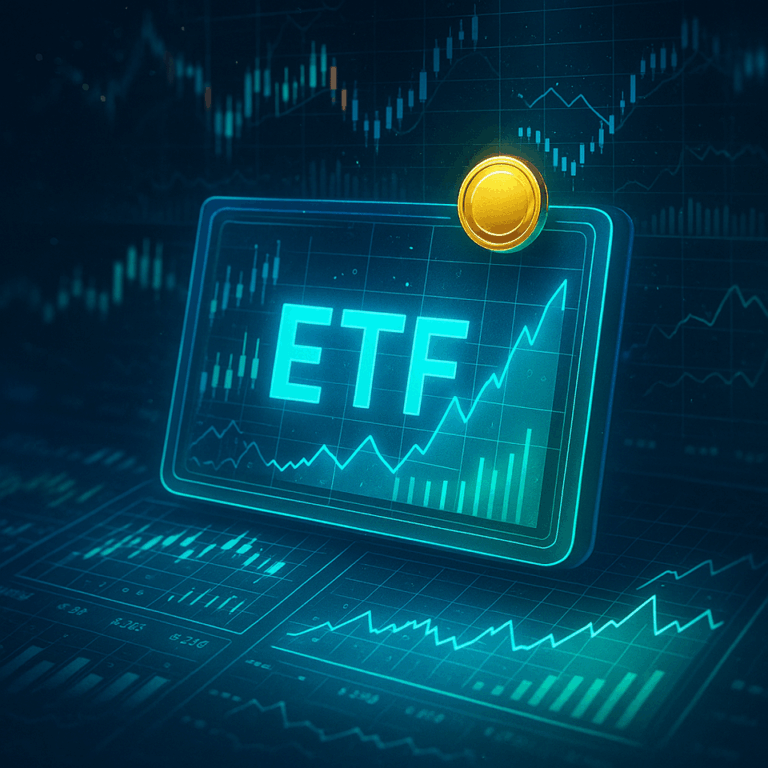In 2025, long-term investing remains one of the most reliable approaches to building and preserving wealth. Despite short-term volatility, global market trends continue to reward investors who prioritize discipline, diversification, and time over speculation.
The principle is simple: markets may fluctuate in the short term, but over years or decades, strong assets tend to grow in value. Long-term investing allows individuals to benefit from compounding returns, reduced emotional decision-making, and a focus on sustainable performance rather than daily market noise.
As economic conditions evolve, successful investors are those who understand how to adapt without abandoning core principles—balancing patience with informed strategy.
Why Long-Term Investing Matters in 2025
Market Volatility and Global Events
Recent years have demonstrated how quickly markets can react to geopolitical shifts, inflation data, or technological disruptions. Yet, history shows that periods of volatility often precede growth. Investors who stay focused on long-term goals are less likely to make impulsive decisions that harm portfolio performance.
Compounding Returns Over Time
Compounding—the process where earnings generate additional earnings—remains the most powerful force in investing. By reinvesting dividends and maintaining consistent contributions, investors can significantly grow their portfolios over time. The earlier one starts, the greater the long-term benefit.
Reduced Emotional Risk
Short-term traders often fall victim to emotional decisions driven by fear or greed. Long-term investors, on the other hand, base their actions on data, goals, and disciplined strategies. This patience helps them navigate downturns without panic and benefit from eventual recoveries.
Core Principles of Long-Term Investing
Diversification Across Asset Classes
Diversification remains the foundation of a resilient portfolio. In 2025, investors are spreading their capital across equities, bonds, real estate, commodities, and even regulated digital assets. This balance reduces the impact of poor performance in any single market sector.
Modern diversification also includes geographic exposure. With globalization and digital finance, opportunities extend across regions—Asia’s emerging markets, Europe’s renewable sectors, and North America’s technology industries all contribute unique advantages.
Dollar-Cost Averaging
Consistent investment over time—regardless of market conditions—helps average out the cost of assets and smooths volatility. This approach, known as dollar-cost averaging, enables investors to accumulate shares systematically, benefiting from lower prices during downturns and reducing risk exposure from market timing.
Value and Growth Balance
Successful long-term portfolios blend value investing (focusing on undervalued, stable companies) with growth investing (targeting innovation and expansion). This mix provides both stability and opportunity, aligning with evolving global economic trends such as sustainability, digitalization, and demographic growth.
Reinvestment and Dividend Strategies
Dividend reinvestment remains a cornerstone of compounding growth. Companies that consistently distribute and increase dividends demonstrate strong financial health and steady cash flow. Reinvesting these dividends rather than withdrawing them enhances total returns over time.
The Role of Technology in Modern Investing
Technological innovation is reshaping how individuals approach investing. Artificial intelligence (AI) and data analytics now assist investors in portfolio optimization, risk assessment, and trend forecasting.
In 2025, robo-advisors and AI-powered platforms provide personalized strategies based on user profiles, market data, and economic conditions. These tools democratize access to financial insights previously reserved for institutional investors, helping individuals make smarter, evidence-based decisions.
Moreover, blockchain technology has introduced secure, transparent investment channels. Tokenized assets, such as digital representations of real estate or commodities, enable fractional ownership and global accessibility—offering diversification opportunities even to small investors.
Sustainable and Responsible Long-Term Investing
Sustainability is now central to long-term investing. Environmental, Social, and Governance (ESG) factors have become essential evaluation criteria for companies and funds.
Investors are prioritizing businesses with ethical practices, low carbon footprints, and sound corporate governance. This approach aligns not only with global environmental goals but also with risk reduction, as companies with sustainable models often exhibit stronger long-term performance and resilience.
In 2025, ESG investing is no longer a niche concept—it’s a mainstream standard shaping global capital flows.
Managing Risk in Long-Term Portfolios
Even long-term strategies require careful risk management. The key is not to avoid risk entirely but to control it intelligently.
-
Regular Portfolio Reviews: Investors should periodically reassess their asset allocation to ensure it aligns with life stages, goals, and market conditions.
-
Rebalancing: Over time, certain investments may outperform others. Rebalancing helps maintain target allocation and prevent overexposure to any single asset class.
-
Inflation Protection: Including inflation-protected securities, commodities, or real assets can safeguard purchasing power as prices rise.
-
Emergency Funds: Maintaining liquidity ensures investors are not forced to sell during downturns.
Behavioral Discipline: The Psychological Edge
The greatest challenge in long-term investing is often psychological. Market fluctuations can tempt even seasoned investors to act emotionally. Success requires patience, rationality, and commitment to long-term objectives.
Understanding behavioral biases—such as loss aversion, herd mentality, and overconfidence—can help investors remain objective. Establishing clear financial goals and timelines reinforces discipline, ensuring decisions are driven by logic, not emotion.
The Future of Long-Term Investing
The future of investing is defined by adaptability. While traditional principles like diversification and compounding remain valid, the tools and opportunities continue to evolve.
Artificial intelligence, digital assets, and global connectivity will expand access to sophisticated investment strategies. Meanwhile, macroeconomic forces such as demographic shifts, renewable energy adoption, and emerging market growth will shape the next wave of wealth creation.
Long-term investors who remain informed, disciplined, and diversified will continue to thrive in this changing environment.
Conclusions
Long-term investing in 2025 is about more than simply holding assets—it’s about building a strategy rooted in patience, adaptability, and sound principles.
By focusing on diversification, consistent contributions, and responsible investing, individuals can navigate uncertainty while steadily growing wealth over time.
Markets will always fluctuate, but those who invest with a long-term mindset—grounded in data, discipline, and patience—position themselves for lasting financial success and stability in an ever-evolving world.







